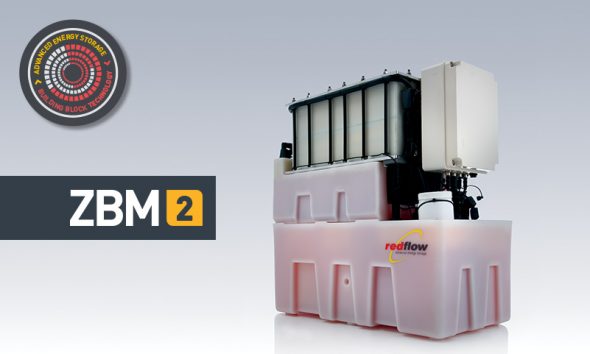The equity raising comprises a share placement AU$10.5 million in two tranches to sophisticated and professional investors and the issue of AU$4 million worth of shares to Hackett CP Nominees Pty Ltd, in exchange for already issued convertible notes.
The money is expected to be used to help Redflow relocate its manufacturing closer to priority markets – namely south-east Asia – to cut supply chain costs, as well as to implement “cost-down projects” to create a sustainable gross operating margin.
According to a Redflow statement on Friday, the cost-down projects are expected to reduce delivered product manufacturing cost by at least 30% over the next 18 months, and to target “sustainable cashflow-positive operations” by the end of 2018.
Redflow’s strategic focus on the large-scale commercial and industrial market was first flagged in February this year, when it revealed it was pursuing “massive potential demand” in Asia’s telecommunications sector.
The company, which had spent much of 2016 positioning itself as a contender for Australia’s burgeoning residential battery storage market, said then that it was successfully selling its larger-scale batteries in Asian countries where telecommunications have leap-frogged copper lines into wireless telephony and broadband.
While its ZCell range is touted for its safety and environmental credentials, in the home market it is competing against a growing number of increasingly cheap and well tested lithium-ion batteries, including the much-hyped Tesla Powerwall.
The road to commercialization hit another speed-hump in April, when a fault in a small batch of the the flow batteries prompted the Brisbane-based company to suspend deliveries.
That fault was rectified in early May, at the same time as the company revealed it had secured its largest contract – for a Pacific Islands hybrid storage installation.
In an investor presentation this month, however, the company stressed that “deployments of battery storage to augment on-site renewables (typically solar)” had expanded rapidly in residential over the last 18 months and were expected to further accelerate.
“Redflow’s ZCell installer channel is successfully selling and deploying ZCell batteries to high-value customers who are sensitive to the inherent technical, lifetime and safety advantages of this product,” the presentation said, adding that it expects its new manufacturing location and cost-down initiatives to boost ZCell penetration in the residential market in the future.
Hackett – who serves as the company’s executive chairman and CEO – said the company had now adopted the best forward operating stance, including the adoption of a new manufacturing partner, Malaysian-based MPTS, which has been a long-term supplier of a core component of its battery stack..
“We have identified that the telecommunications sector has a strong, proven and ongoing demand for energy storage that fits the ‘sweet spot’ of Redflow’s unique value proposition,” he said.
“At the same time, Redflow will continue supplying into its ZCell residential battery sales channel which is delivering our compelling energy storage solution for residential and SOHO customers, especially those located in off-grid areas or warm climates.”
Redflow COO Richard Aird said the process of disengaging from the company’s former manufacturing location was almost complete.
“The activities Redflow is undertaking to transition manufacturing and to implement key product cost-down projects are critical to the future success of the company,” he said.
“Product deliveries will continue from built-up stock-on-hand and stock in transit ahead of the planned resumption of manufacturing in South-East Asia toward the end of this calendar year. Redflow staff are keen and committed to achieving the steps needed to maximize our prospects of future success.”
This article was originally published in RenewEconomy. It is republished with permission.
This content is protected by copyright and may not be reused. If you want to cooperate with us and would like to reuse some of our content, please contact: editors@pv-magazine.com.








By submitting this form you agree to pv magazine using your data for the purposes of publishing your comment.
Your personal data will only be disclosed or otherwise transmitted to third parties for the purposes of spam filtering or if this is necessary for technical maintenance of the website. Any other transfer to third parties will not take place unless this is justified on the basis of applicable data protection regulations or if pv magazine is legally obliged to do so.
You may revoke this consent at any time with effect for the future, in which case your personal data will be deleted immediately. Otherwise, your data will be deleted if pv magazine has processed your request or the purpose of data storage is fulfilled.
Further information on data privacy can be found in our Data Protection Policy.